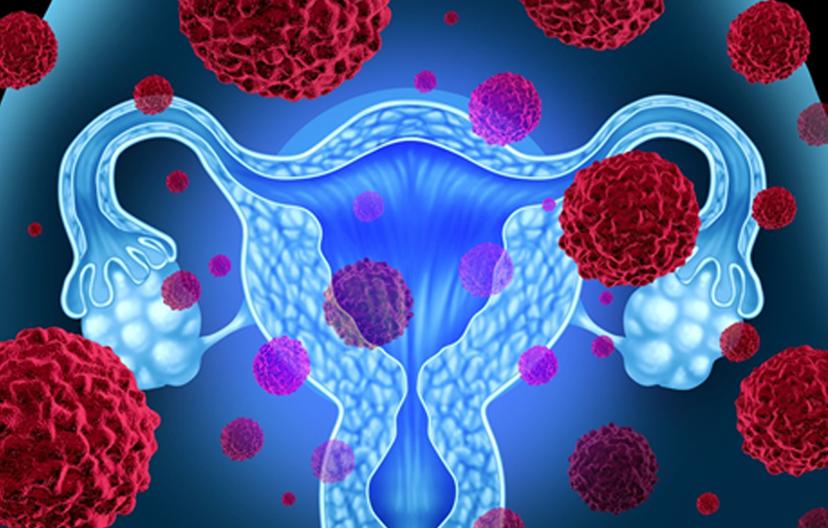Epigenetic Biomarkers in Gynecological Cancers Explored
Dr. Lewis Francis, of Swansea University, discusses ChIP methods used in his research on the role of epigenetics in ovarian and endometrial cancers
13 Sept 2017
In this SelectScience® interview, Dr. Lewis Francis, a senior lecturer at the Swansea University Medical School, describes his research into the epigenetic changes associated with gynecological cancers and the importance of reproducible methods in his laboratory.

SS: Briefly introduce yourself and your place of work
LF: A senior lecturer at Swansea University Medical School, I am a member of the Reproductive Biology and Gynecological Oncology Research Group, focusing on female reproductive cancers, in particular, ovarian and endometrial cancer. At our university, we have developed a dynamic clinical research environment, with particular value taken from our collaboration with NHS partners. Our work investigating gene and protein biomarkers in gynecological cancers, and their regulatory processes, are developed using clinical samples alongside established in vitro models.
SS: What is your research focus? And what aspects of cancer epigenetics are you studying?
LF: Our research group focuses on gynecological cancers and female infertility. We are particularly interested in the molecular mechanisms that underlie cellular transitions during cancer development and aggressive differentiation. Ovarian cancer is problematic, with a poor prognosis due to its late, advanced-stage presentation. Of particular motivation to us is identifying the epigenetic processes that cancer cells use to develop and colonize their local environment prior to metastasis, and this may yield future therapeutic and/or diagnostic potential.
SS: Please describe an ongoing project in your lab
LF: Some of our projects focus on the molecular function of epigenetic mechanisms in ovarian cancer. By characterizing these epigenetic marks, we are trying to identify modifier proteins that regulate key target gene sets, as well as how the modifier proteins influence transcription factor recruitment or binding in the context of nuclear receptor expression. We profile these marks in clinical samples and hope to develop relevant biomarkers to understand the role of epigenetic modifiers in ovarian cancer development. We use ovarian cancer in vitro models, both high and low grade, in 2D and 3D. By applying sub-lethal doses of epigenetic modifying drugs, we can investigate the role of epigenetic instability in driving aggressive cancer differentiation at a molecular, cellular and mechanical level.
It’s easy for manual handling and competitively priced for high-throughput, 96-well plate analyses.
Dr. Lewis Francis Swansea University Medical School
SS: What are some methods you use in your lab?
LF: In order to identify epigenetic marks and modifiers we employ chromatin immunoprecipitation (ChIP)-based methods on both clinical biopsies and in vitro models. ChIP-qPCR helps us identify modifier proteins interacting with our target genes of interest and their effect on transcription factor binding, while ChIP-seq provides large data sets for genome-wide pattern analysis. Previously, our ChIP methods did not yield a lot of chromatin and failed to provide adequate sensitivity and selectivity for our chosen investigations. This becomes especially impeding when trying to validate marks using small tissue biopsies and cell-specific sub-populations from primary culture. We started using the Chromatrap ChIP and ChIP-qPCR kits to facilitate reproducible measurements from these challenging samples. We found that the buffer chemistries employed in these kits were excellent for adequate chromatin extraction. Their small volume and sensitive IP enables selective enrichment of DNA associated with multiple target marks and modifiers for further use in downstream experiments such as qPCR and/or sequencing. It’s easy for manual handling and competitively priced for high-throughput, 96-well plate analyses. Chromatrap allows flexible multi-target IP profiling projects from both primary and secondary cell cultures.
SS: What is the importance of reliable methods?
LF: Exploring the epigenetic landscape is complex. It is important to have robust methods that enable you to target multiple marks at the same time or single marks from multiple sample types, for example, from different patient biopsies or from cells in different conditions such as the presence and absence of a particular drug treatment. Similarly, profiling of epigenetic marks over different time points may require complex experimental design, making it essential to identify fast, easy-to-use, reproducible assays compatible with processing large sample numbers.
SS: What is the future of your research?
LF: Hopefully, the future will involve translating our research to patient benefit. By exploring cancer-associated epigenetic marks and modifiers in gynecological cancers, we hope to understand their functional role in cellular transformation. Combining molecular-level screening with cellular-level analysis will yield new information regarding the potential for translating the reversible nature of epigenetic modifications toward new diagnostic and therapeutic approaches. Focused by the need for new therapy options in gynecological cancers, we will continue to work with clinical and industrial partners to translate our fundamental research.
